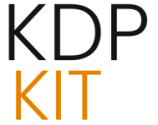Navigating the Shifting Sands of the Traditional Gatekeepers: A Decade-Long Pursuit in 2025 Publishing

The journey of an author dedicated to securing a traditional book deal is rarely linear, but by the year 2025, this pursuit has become an endurance test set against a backdrop of profound industry transformation. For the writer who has been circulating a manuscript for a decade, the landscape they re-enter is one marked by digital disruption, evolving consumer metrics, and stubbornly entrenched institutional frameworks. The core tension remains: negotiating an artistic vision conceived in one era against the risk-averse, algorithm-driven realities of today’s literary market.
Navigating the Shifting Sands of the Traditional Gatekeepers
The industry that the aspiring author seeks entry into is no static entity; by two thousand twenty-five, it has undergone several significant digital and cultural transformations, yet the structures of power remain stubbornly resistant to wholesale reinvention. The gatekeepers—agents and editors—operate within a framework that is increasingly scrutinized for its homogeneity and its focus on risk mitigation, presenting unique challenges for long-tenured writers whose work might be deemed “ahead of its time” or, conversely, “outside current trends.” This negotiation of old structures with new market realities forms a central tension in the ongoing pursuit.
The Evolving Metrics of Marketability in a Digital Age
In the current climate, marketability is no longer solely assessed by the strength of the prose or the originality of the concept; it is often quantified by the author’s pre-existing platform, the perceived social media footprint, and the ease with which a book can be categorized and sold in an algorithm-driven retail environment. For manuscripts that have been in circulation for a decade, this presents a significant hurdle. The very qualities that made the work “quirky” or “unusual” a decade ago—the very things that prevented the initial breakthrough—might now be either highly sought after if they fit a narrow, currently popular niche, or completely dismissed as commercially unviable because they do not cleanly map onto existing best-seller taxonomies. The system demands a clear, immediate commercial hook, often leaving deeply textured, literary genre works to languish in the statistical no-man’s-land between mainstream fiction and pure literary endeavors.
Data from the early part of 2025 suggests that publishers, facing economic volatility, have sharpened their focus on assets that guarantee an immediate return, making the pre-established author platform an essential, often non-negotiable, prerequisite for acquisition. An author without a robust presence—including an engaged email list and a meaningful social media footprint—is at a distinct disadvantage, regardless of the manuscript’s inherent quality. This emphasis shifts the publisher’s perceived role from nurturer of new talent to investor in proven reach.
Genre Fiction’s Tightrope Walk: Fantasy Novels and the Developmental Editor’s Role
The area of speculative and fantasy literature, for instance, is intensely competitive, with developmental editors and structural assessments being critical components of a manuscript’s viability, even before it reaches an agent. Recent industry coverage highlights the intense focus placed on world-building consistency, intricate magic systems, and character arc satisfaction within these expansive narratives. A writer whose work has been gestating for ten years must now ensure their foundational structures—the pacing, the internal logic of their invented reality—meet the rigorously high standards set by genre-specific editorial partnerships. The developmental editor, in this modern context, functions less as a simple critic and more as a necessary quality control checkpoint, ensuring the manuscript possesses the robust architecture required to withstand intense market scrutiny and reader expectation, a standard that might have been applied far less rigorously a decade ago to debut authors. The writer must reconcile their original, potentially more free-form vision with the contemporary need for meticulous structural execution, often requiring extensive, targeted revisions based on expert third-party assessment.
In 2025, developmental editing for genre fiction, particularly fantasy, is heavily oriented toward establishing narrative architecture, including the absolute consistency of world-building rules and magic systems, a level of rigor only solidified through professional intervention. The editorial letter now frequently demands not just structural fixes but proof that the invented reality holds up under intense scrutiny, a process designed to mitigate reader disappointment and subsequent negative reviews, which can derail a book’s sales velocity in the current digital marketplace.
Examining the Structures of Access and Representation in Twenty-Twenty-Five Publishing
While there have been encouraging public commitments toward greater diversity and broader representation within the publishing houses over the past few years, the lived reality for many long-stalled authors remains one of systemic inertia. The statistical realities of who holds power within editorial suites and who receives the most attention for acquisition continue to create an uphill battle for voices that fall outside narrowly defined norms. A writer observing this landscape after a ten-year wait must contend with the disheartening possibility that their perseverance alone is insufficient to overcome institutional biases, however subtle or unintentional they may be. The pursuit, therefore, becomes not just a creative quest but a socio-cultural act—a demand for the established structure to finally broaden its aperture to include narratives that reflect the actual complexity of the world in two thousand twenty-five, rather than simply recycling familiar, pre-vetted formulas. The long wait often sharpens the awareness of these structural impediments, transforming personal frustration into a broader critique of the publishing apparatus itself.
The data reveals that despite public calls for change, the industry’s core mechanisms—which operate on precedent and quantifiable market success—often reinforce existing patterns. A decade-old manuscript, by its very nature, exists outside the current zeitgeist, making it difficult for acquisition teams focused on immediate, trackable trends—like the “Romantasy” surge reported in early 2025—to slot the work into a known successful category. This institutional preference for the predictable, the low-risk investment, functionally acts as a barrier to truly original or temporally misplaced work.
The Business of the Manuscript: Rethinking Creative Value
A crucial, often painful, realization for the decade-long aspirant is the fundamental dissonance between the artistic conception of the work and the commercial reality of its sale. Literary creation, at its highest level, is an exploration of truth and beauty; its transaction, however, is purely commercial. In the current publishing environment, authors are increasingly expected to understand and actively participate in the latter aspect of this dual identity.
The Uncomfortable Truth: Treating the Work as a Commercial Product
The uncomfortable lesson learned after years of rejection is that, to the acquisition side of the industry, a manuscript is first and foremost an investment, a product intended to generate profit to cover overheads and salaries. This perspective necessitates a brutal reappraisal of the author’s relationship with their own creation. The work is not merely an extension of the self; it is a commodity whose success hinges on factors like genre placement, current sales velocity data, and the author’s ability to effectively pitch its salability. This shift in perspective—from viewing the manuscript as art to viewing it as a product—is often jarring, as it implies that the most deeply felt, unique elements of the writing might ironically be the very things that render it commercially suspect in the eyes of a risk-averse industry. The long-term struggler must master this vocabulary of commerce to even have a seat at the table where traditional deals are brokered.
This product-centric view is exacerbated by internal industry realities. Reports circulating in 2024 suggested that major houses dedicate a minimal percentage of revenue to marketing—as low as 2%—placing a far greater onus on the author to pre-validate the book’s commercial appeal. Furthermore, the industry’s focus on immediate sales for new titles means that a book not fitting a proven category or lacking a built-in audience is statistically likely to join the 19% of Big Five titles that sell a dozen copies or fewer.
The Burden of Promotion: Why Author Marketing is Now Non-Negotiable
Furthermore, the responsibility for moving that product has increasingly migrated onto the author’s shoulders. In two thousand twenty-five, the expectation that a publisher will swoop in and single-handedly shepherd an unknown author to success is largely obsolete. The narrative that marketing is entirely the publisher’s domain is a relic; instead, authors are now judged on their ability to demonstrate, pre-contract, that they possess an existing, engaged audience ready to purchase the book on day one. For the writer who has spent ten years perfecting the inward craft of storytelling, the external necessity of platform building, digital engagement, and consistent self-promotion can feel like a significant and unwelcome distraction.
The decade-long effort often neglects the external, entrepreneurial development required in the modern market. The platform—encompassing a website, email list, and focused social media presence—is now viewed by agents as evidence of an author’s commitment to the entire career, not just the writing. Failure to develop this robust promotional strategy alongside the manuscript is now widely understood to be a primary reason why even promising books fail to earn out their advances, creating a vicious cycle where the quiet, writing-focused artist is perpetually disadvantaged by the commerce-first structure.
The Shadow of the Drawer: The Real Cost of Absolute Adherence
Perhaps the most sobering aspect of the decade-long struggle is the constant, looming specter of surrender—the temptation to finally close the file and consign the hard-won manuscript to digital oblivion. This is not merely giving up on a single book; it is potentially abandoning a decade’s worth of accumulated creative capital and the unique vision it represents.
The Ephemeral Nature of Artistic Timelines and Mortality’s Deadline
The pursuit of a traditional deal can be so all-consuming that it forces the writer to operate under an illusory timeline, believing that the right connection or the perfect manuscript will eventually arrive. However, the hard reality, which gains clarity with each passing year, is that time is finite, and creative energy is not limitless. A decade spent waiting is a decade not spent writing other books, or perhaps a decade spent failing to circulate a work that, while perhaps not a blockbuster, would have resonated deeply with a specific, dedicated readership. The writer is haunted by the thought that if they die before the manuscript finds a home, the stories will have died with them, a truly tragic waste of unique creative expression that no amount of ego gratification could ever justify.
The “Traditional or Death” Mentality and Its Tragic Finality
Many authors, perhaps unconsciously, adopt a rigid, all-or-nothing stance: success is exclusively defined by a traditional contract, and any other path, such as self-publishing, is viewed as a concession or a failure. This “Traditional or Death” philosophy is the most dangerous element of the long wait. It traps the author in an untenable position, refusing to see that abandoning a perfectly good, fully realized manuscript—even if the agent search stalls—is far worse than releasing it through a non-traditional channel. Wonderful books, the evidence suggests, too frequently sit in digital drawers because an accepting editor left a job, or an agent lost interest, illustrating that the failure to publish is often an organizational failure, not necessarily a creative one.
The growing strength of the independent sector in 2025 has rendered this binary choice increasingly irrational. When median incomes for successful self-published authors in 2023 were reported as notably higher than those of traditionally published midlist authors, the argument for waiting purely on principle erodes in favor of a sustainable career that honors the completed work.
The Unconventional Ascent: Evaluating the Self-Publishing Ecosystem
For the writer who has survived the decade, the self-publishing sphere, while intimidating, no longer represents a pariah path but rather a significant, structurally sound alternative for gaining an audience and retaining creative control. The evolution of tools and services has professionalized this route considerably.
Bypassing the Bottleneck: Self-Publishing as a Viable (Though Laborious) Route
The self-publishing world now offers robust infrastructure for every stage of production, from developmental assessments by experienced editors specializing in genre fiction to professional formatting and audiobook production. For the author frustrated by the decade-long wait for external consensus, this path allows for the immediate realization of the creative vision. It requires a shift from pitching to producing, transforming the author from a supplicant into a CEO of their own literary enterprise. While the workload is immense—encompassing editing, design, marketing, and distribution—it grants complete autonomy over timing, rights, and creative direction, a control largely absent in the traditional model.
By 2025, the self-publishing landscape is fundamentally a business sector, not a hobbyist corner. Success is tied to smart investment in professional services—a strategy that mirrors the quality control of traditional houses but retains the revenue potential and speed of the indie route. Furthermore, new hybrid models—such as profit-sharing arrangements without an advance—are emerging, providing authors a middle ground that offers distribution advantages without total rights surrender.
Distinguishing Reputable Support from Predatory Schemes in a Saturated Market
This accessibility, however, has created a highly saturated and sometimes perilous environment. The long-term writer, perhaps less versed in the latest digital publishing pitfalls than newer indie authors, must exercise extreme caution. The temptation to pay for promises of guaranteed success is high. It is crucial to differentiate between established, reputable developmental editors who offer transparent, professional critique and coaching—often vetted by industry bodies—and predatory entities that make hyperbolic promises or demand excessive fees for services that do not genuinely enhance the manuscript’s market readiness. A decade of literary experience must now be paired with a sharp business acumen to navigate the complex array of consultants, coaches, and service providers available in the two thousand twenty-five landscape.
The key distinction for the veteran author lies in recognizing that the required external help is for business execution (design, marketing strategy, advanced distribution) rather than creative validation. Reputable services function as outsourced departments, recognizing that the author is the CEO, whereas predatory schemes prey on the decade-long insecurity, promising an approval the author is capable of generating themselves.
The Role of Craft Support in a Post-Hustle Era
As the industry focuses more on immediate sales potential, the need for deep, constructive feedback on the craft—the very core of the writing—remains paramount, especially for complex genres like fantasy. This is where the modern, expert developmental editor proves invaluable, acting as an essential partner rather than a mere quality checker.
The Modern Developmental Editor as Architect and Motivator
The contemporary developmental editor for genre fiction, particularly, is often described as a narrative architect. Their work goes beyond spotting plot holes; it involves assessing the viability of the world-building logic, ensuring the pacing sustains a lengthy narrative arc, and confirming that the emotional payoffs land with the intended force. For the author trapped in a decade-long cycle, this editor can serve as a vital external source of motivation, providing feedback that is both technically rigorous and humanely delivered. A strong editor’s report can re-energize a stalled project by offering a clear, actionable blueprint for revision, moving the writer out of a state of anxious stagnation and into a state of productive, targeted creation. This relationship is one of partnership, aimed at fortifying the story’s foundation to withstand whatever marketplace it eventually enters.
The Value Proposition of Deep Structural Feedback Beyond Prose Polish
While copyediting addresses the surface mechanics of language, the developmental intervention focuses on the integrity of the story’s bones. For a manuscript that has resisted traditional acquisition for ten years, the issue is rarely a misplaced comma; it is likely a fundamental weakness in structure, theme, or character motivation that has been invisible to the author through prolonged exposure. Securing an objective, expert developmental assessment allows the writer to finally see the manuscript with fresh eyes, identifying the core structural flaw that prevented it from connecting with agents or editors years ago. This deep feedback ensures that any subsequent publishing attempt, whether traditional or independent, is built upon a foundation that is as strong as the author’s creative vision intended it to be.
Furthermore, the rise of audiobooks, which surpassed ebook revenue for traditional publishers in 2024, highlights the need for this structural integrity. A poorly paced or structurally weak narrative is often exposed more harshly in the auditory format, making the developmental editor’s role in solidifying character arcs and pacing a direct investment in multi-format marketability.
A Ten-Year Reflection: Redefining Literary Worth and Future Intentions
Standing at this juncture in two thousand twenty-five, the decade-long struggle forces a final, necessary reckoning that transcends the initial goal of securing a deal. The real achievement, if one chooses to see it, lies in the sustained commitment to the art form itself.
Measuring Success by Output and Resilience, Not Just Contract Signatures
The most meaningful redefinition of success is to divorce it entirely from the validation metric of the contract. If, over ten years, the author has produced five complete, revised, and polished manuscripts—works that have internalized lessons from countless rejections and evolved through self-study and critical feedback—that body of work is the success. Resilience in the face of systemic friction, the ability to continue generating new narratives despite overwhelming discouragement, is a form of professional accomplishment that is entirely self-validated and cannot be taken away by market fluctuations or editorial turnover. The true legacy is the development of the literary muscle memory acquired through sustained effort, irrespective of external acquisition.
The Next Iteration: Strategizing for Long-Term Career Sustainability Beyond the Initial Hurdle
The final step is to move past the singular obsession with the first book deal and pivot toward crafting a sustainable, multi-book career strategy. This involves deciding—with radical honesty—which path best serves the author’s current body of work and long-term goals. If the traditional route remains the ultimate aim, the author must treat the next submission phase with a business-first strategy informed by a decade of market knowledge, prioritizing platform cultivation alongside manuscript revision. If independence is chosen, it must be embraced fully, leveraging all available digital tools and editorial support networks. The persistence that defined the past ten years must now be channeled into a focused, strategic next phase, recognizing that the literary life is not defined by a single breakthrough moment, but by the continuous, thoughtful navigation of the publishing world, whatever form it takes.








